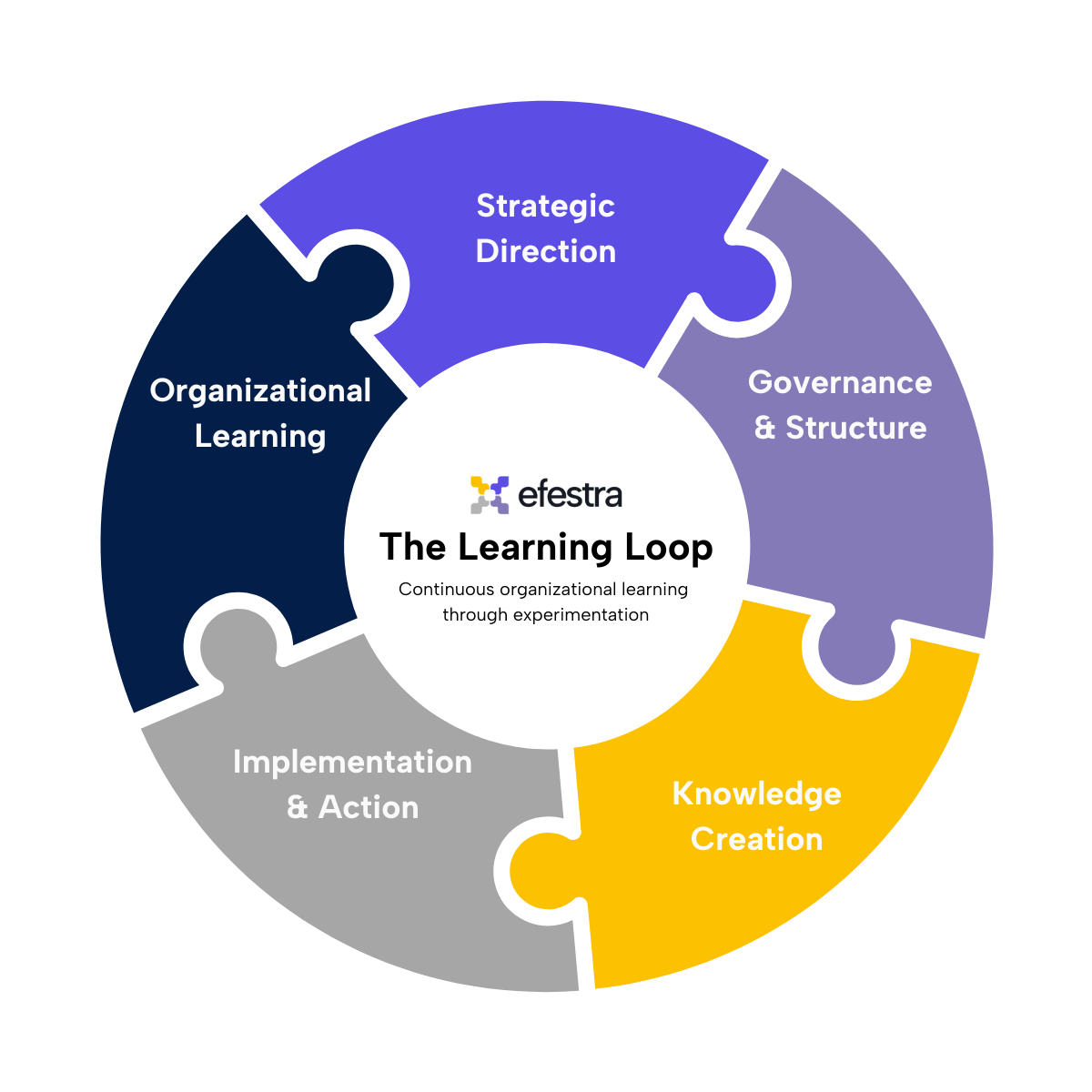Learning Center • 1-15 Minutes • Foundation Level
The Learning Loop™ Framework
Transform experimentation from isolated tests into a continuous cycle of organizational learning that drives strategic business decisions.
Introduction
What is The Learning Loop?
The Learning Loop represents the complete cycle of organizational learning through experimentation. It’s not just about running tests—it’s about creating a continuous system where insights build upon each other and directly influence business decisions.
Key Insight Most organizations focus on experiment execution but fail to complete the learning cycle. This creates a disconnect between test results and business outcomes—what we call the "Trust Gap."
The Learning Loop framework ensures that every experiment contributes to organizational knowledge and strategic decision-making, transforming experimentation from a tactical activity into a strategic capability.
Watch the video below or keep reading.

The Five Components of The Learning Loop
1. Strategic Direction
Aligning experiments with business objectives and identifying high-impact hypotheses that matter to the organization.
Key Elements
-
Clear linkage between experiments and strategic objectives
-
Hypothesis prioritization based on potential business impact
-
Resource allocation aligned with strategic priorities
2. Governance & Structure
Establishing quality standards and frameworks that elevate experimentation quality without constraining innovation.
Key Elements
-
Standardized experimentation methodologies
-
Quality control processes for hypothesis development
-
Consistency across teams and initiatives
3. Knowledge Creation
Generating reliable insights through proper experimentation and synthesizing results into actionable knowledge.
Key Elements
-
High-quality insights through rigorous methodology
-
Synthesis of results into decision-ready insights
-
Connection of insights across experiments
4. Implementation & Action
Translating insights into business decisions and executing findings with fidelity and accountability.
Key Elements
-
Clear processes for acting on experiment results
-
Validation of outcomes against predictions
-
Accountability for implementation decisions
5. Organizational Learning
Building institutional memory and evolving practices based on accumulated insights and results.
Key Elements
-
Institutional knowledge preservation
-
Practice evolution based on outcomes
-
Compounding returns on experimentation investment
Loop Failures
Common Learning Loop Failures
The Strategy Disconnect
Experiments run without clear connection to business objectives, creating activity without purpose.
The Methodology Gap
The Knowledge Silo
The Implementation Failure
The Memory Loss
Maturity Model
Experimentation Governance Maturity Model
Organizations typically progress through four stages of experimentation governance maturity. Understanding your current stage helps identify the path forward.
Stage 1: Activity-Focused
Running tests without systematic learning. Each experiment exists in isolation with no organizational memory.
- Focus on test velocity over impact
- No connection to strategic objectives
- Results stored in disconnected tools
- Limited implementation tracking
Stage 2: Process-Oriented
Consistent methodology in place with basic documentation of results, but limited connection to strategy.
- Standardized testing processes
- Basic result documentation
- Some cross-team visibility
- Emerging implementation tracking
Stage 3: Knowledge-Building
Insights preserved and connected. Experiments build on past learnings with some strategic alignment.
- Centralized insight repository
- Experiments reference past learnings
- Growing strategic alignment
- Implementation success tracking
Stage 4: Business-Integrated
Complete learning loops with experimentation driving strategy and compounding organizational knowledge.
- Full strategic integration
- Systematic knowledge application
- Executive engagement and trust
- Continuous improvement culture
Assess Your Maturity
Understanding your current maturity level is the first step toward building effective experimentation governance.
Learning Loop Health Metrics
Organizations implementing experimentation governance see dramatic improvements across multiple dimensions:
76%
Loop Completion Rate
Percentage of experiments that complete the full cycle from strategic direction through organizational learning
2.4x
Knowledge Compound Rate
How rapidly insights build upon previous insights to accelerate learning
68%Decision Influence
How consistently experiment results drive business decisions
12 Days
Learning Velocity
How quickly the organization moves from question to insight to action
Your Next Steps
Ready to transform your experimentation program with proper governance? Here are your recommended next steps: